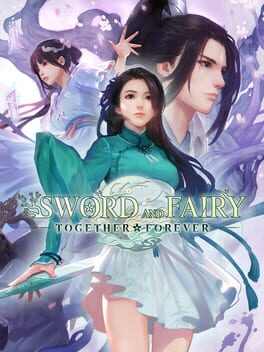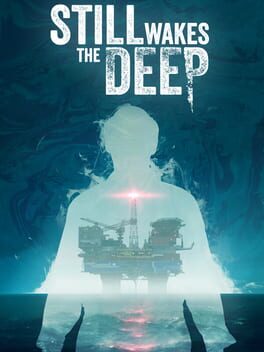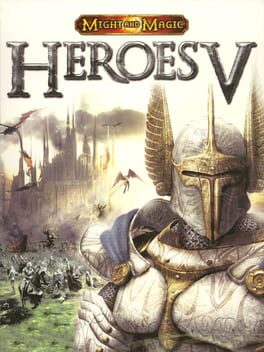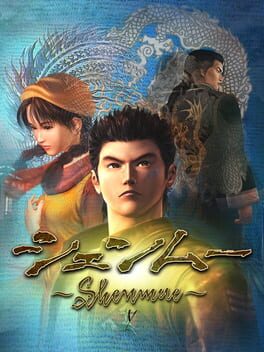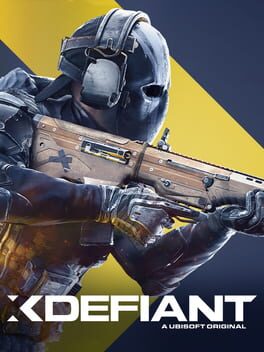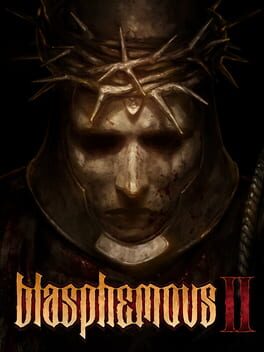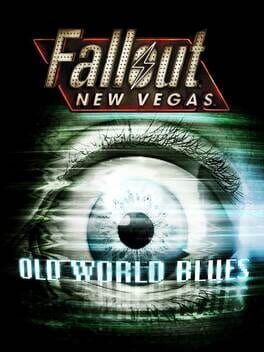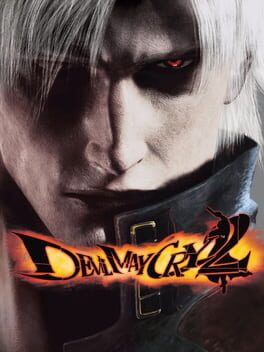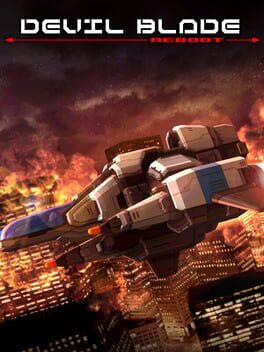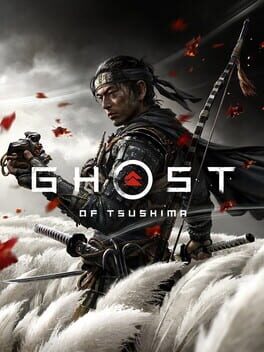lunch96
103 Reviews liked by lunch96
Live A Live
2022
Almost thirty years after its initial release, this is still bizarrely overvalued as an emotional experience, and the remake leans into this with a florid translation meant to shore up its artistic cred. "Look, your counter-cultural adolescent fixation is actually deep and literary after all!" Square now claims of a game where you can fart on a dinosaur until it dies. The effort to canonize games as art has given birth to a whole lot of anecdotal overexaggeration, but I seriously cannot comprehend forming a legitimate bond with any of these caricatures, cute and expressive as they are.
The dishonesty is a shame, because even taken at its truer comic-book face, Live a Live has always been ambitious and rich with the spirit of experimentation that characterized Square's best work in the mid-to-late 90s. Unfortunately none of these virtues extend to the inane battle system, in which nearly every character sports ten or twelve different moves when there are at most two optimal options for any given encounter. It is no coincidence that the best chapters in the game (Sundown and Cube) are the ones that downplay the combat the most.
The Distant Future, in fact, has always been the most interesting chapter for this reason. While many of the other chapters pioneer early iterations of genre systems - item synthesis (Pogo), a crude skill point gimmick (Shifu), performance-based storytelling/rewards (Oboromaru) - Cube's chapter is brave enough to ask whether JRPG storytelling can survive without any mechanical hooks at all (save the last boss, only necessary as a justification for the frame narrative). Does it succeed? Insofar as anything ripping off two of the best sci-fi films of all time will, sure, but it's also hampered by its lack of depth. There just isn't enough time to take any of these characters anywhere interesting, and that goes for every chapter. It's a double-edged sword, because the breezy pace is a positive (and this battle system could not support a 40-hour game), but none of our seven protagonists make for especially strong anti-hate thesis statements when the time comes to wrap the whole thing up. The narrative is left fundamentally wanting, doubly so if you have even basic knowledge of English prefixes and can predict what lies in store for the final chapter.
Even if it doesn't make good on its lofty pretenses, there is plenty to enjoy here and it's one of the more justifiable expressions of the remake fetishism running rampant through the industry right now. We should at least be thankful that we got this and not Bahamut Lagoon.
The dishonesty is a shame, because even taken at its truer comic-book face, Live a Live has always been ambitious and rich with the spirit of experimentation that characterized Square's best work in the mid-to-late 90s. Unfortunately none of these virtues extend to the inane battle system, in which nearly every character sports ten or twelve different moves when there are at most two optimal options for any given encounter. It is no coincidence that the best chapters in the game (Sundown and Cube) are the ones that downplay the combat the most.
The Distant Future, in fact, has always been the most interesting chapter for this reason. While many of the other chapters pioneer early iterations of genre systems - item synthesis (Pogo), a crude skill point gimmick (Shifu), performance-based storytelling/rewards (Oboromaru) - Cube's chapter is brave enough to ask whether JRPG storytelling can survive without any mechanical hooks at all (save the last boss, only necessary as a justification for the frame narrative). Does it succeed? Insofar as anything ripping off two of the best sci-fi films of all time will, sure, but it's also hampered by its lack of depth. There just isn't enough time to take any of these characters anywhere interesting, and that goes for every chapter. It's a double-edged sword, because the breezy pace is a positive (and this battle system could not support a 40-hour game), but none of our seven protagonists make for especially strong anti-hate thesis statements when the time comes to wrap the whole thing up. The narrative is left fundamentally wanting, doubly so if you have even basic knowledge of English prefixes and can predict what lies in store for the final chapter.
Even if it doesn't make good on its lofty pretenses, there is plenty to enjoy here and it's one of the more justifiable expressions of the remake fetishism running rampant through the industry right now. We should at least be thankful that we got this and not Bahamut Lagoon.
In keeping with the free-flowing, improvisational spirit of Final Fantasy VII, a series of semi-connected thoughts:
- Lots of people are hung up on the minigames for one reason or another, and they are worthy of discussion, though not about whether they belong here (of course they do) or if they're any good (most aren't), but how their purpose has shifted between the original and this iteration. In 1997, they were tonal interludes meant to show off what a strange, crazy planet we're fighting to protect, bursting with unexpected things to see and do. In 2024, they're blown up in length and number to serve as narrative delivery devices, neatly structured to grant further dimension to one or more of your party members while also conveniently padding out the playtime of your $70 luxury consumer purchase.
More than that, even, they're ways of delaying the inevitable. Rebirth isn't really a game about a doomed planet, but a doomed woman, and everyone with the faintest knowledge of FF7 is aware of this. No matter how many sprawling overworld maps or Gold Saucer diversions or matches of Queen's Blood you throw yourself into, you're still on a beeline toward tragedy. Consider Cloud and Aerith's last "date" and how they never get exactly what they want - the candy, the tchotchke, the photo. Our choices in this world, like any other video game world, are merely a dilation of time, a hopeless attempt to forestall the medium's great historical trauma, gamer 9/11.
This is all theoretically interesting, but also has the unfortunate effect of imbricating the story's emotional slam dunk with the grim maximalist demands of the AAA market. You get what you came for... after 100 hours of wildly quality-variable content, of course. Even the Fated Event itself is compromised by a ludicrous boss rush, your characters all barking out their combat sound bites as if nothing has happened, multiversal fanservice rearing its ugly head for no discernible reason. (I ask this with no malice in my heart: why do people care about Zack enough to justify how much screentime he gets here?) In many ways this is a very simple game, but in the one moment that truly called for simplicity, all of the dubious worldline hijinks Nomura planted in the first game got in the way.
- I did find myself moved by one scene toward the end where the game briefly puts you in the shoes of a sad, scared little girl. The original FF7 made remarkable use of modifying your control scheme to convey shifts in your characters' emotional states; in Rebirth they generally overdo or mishandle it, much like everything else, but it worked well here.
- The combat is generally quite enjoyable. It's comforting to know that SE can get an action RPG right after FF16. Even with one installment worth of practice, though, some characters still feel better thought-out than others. Aerith sucks and Barret is truly just sad - what if you wanted to play Bayonetta using nothing but the guns? I have a few other complaints, like how ancillary and easily interrupted magic is, your characters' irritating lack of poise, and some hitbox tracking that would make Miyazaki blush, but they are ultimately pretty minor.
- Morph and Steal are so useless, what gives?
- Guarding feels terrible. No feedback.
- I liked the (PROTORELIC QUEST SPOILERS) fight a lot. It demands careful and attentive play but also gives you lots of options.
- The music is good, of course, although what other possible outcome could there be when you throw an exhausted supergroup of Japanese composers at one of the most beloved OSTs of all time? Unfortunately, the music is also a key factor in one of the game's great failures: it is almost perpetually unable to modulate its atmosphere. This shit is LOUD, all the time. There are no opportunities whatsoever to just be in a moment and collect your thoughts or size up your environment. I knew I was in for disappointment early on when Cloud and Sephiroth rolled into Nibelheim for their ill-fated flashback mission and I heard the sorrowful strains of Anxious Heart... followed by 15 different NPCs barking at me... followed by me stepping on a stool and dragging it noisily along with my character model for 100 feet. The din is constant from start to finish, and if you don't agree, Chadley would like to have a word or fifty thousand with you.
- This is a more personal gripe, but I feel that this trilogy's total inability to establish a horror tone is one of its great betrayals of its predecessor. The writing was on the wall with the Shinra Building in Remake; while that whole dungeon was badly handled in general, there was no attempt whatsoever at conveying any unease or fear. This is likely a result of Sephiroth being overexposed from the jump in Remake so there's no mystery, no terrible legend lurking around the corner. The horror in the original worked partly because Sephiroth was so brutal in a way that the franchise had never grappled with, but also because the world was more recognizably our own and easier to project yourself on than that of any other Final Fantasy: urban, modern, diseased, desperate, doomed. The Midgar Zolom incident makes you feel small and mortal, and the Shinra Mansion like you're a mere human enmeshed in something hostile and supernatural, but in this game those two setpieces are so fucking stupid that they're not even worth talking about.
- I know that everyone is nutting over the dumb dog song but for me the standout is One, Two, SABO!, which plays, as far as I can tell, during exactly one optional combat. Aggressively joyous and exuberant to the point of menace... love it! Fucking Cactuars!
- In a perfect world, both this game and FF16 falling short of SE's sales expectations would tell the company that the AAA open-world model is just not an effective container for video game storytelling, or at least the type that Final Fantasy made its name on so many years ago. It is my unreasonable hope that they will course correct for Part 3 and bring us back to a more focused experience, but as ever, the gamers demand more. Who are the devs to deny them the constant creep toward bigger and better?
- I really enjoyed Remake, but after this installment the project has lost its shine for me. No more remakes!
- One exception: if SE had any sort of cojones left, they would follow up this time dilation game with a remake of time kompression game FF8, omitting/streamlining all of the side content and churning out the most decadent 10-hour banger of all time, though they don't and they won't.
- Lots of people are hung up on the minigames for one reason or another, and they are worthy of discussion, though not about whether they belong here (of course they do) or if they're any good (most aren't), but how their purpose has shifted between the original and this iteration. In 1997, they were tonal interludes meant to show off what a strange, crazy planet we're fighting to protect, bursting with unexpected things to see and do. In 2024, they're blown up in length and number to serve as narrative delivery devices, neatly structured to grant further dimension to one or more of your party members while also conveniently padding out the playtime of your $70 luxury consumer purchase.
More than that, even, they're ways of delaying the inevitable. Rebirth isn't really a game about a doomed planet, but a doomed woman, and everyone with the faintest knowledge of FF7 is aware of this. No matter how many sprawling overworld maps or Gold Saucer diversions or matches of Queen's Blood you throw yourself into, you're still on a beeline toward tragedy. Consider Cloud and Aerith's last "date" and how they never get exactly what they want - the candy, the tchotchke, the photo. Our choices in this world, like any other video game world, are merely a dilation of time, a hopeless attempt to forestall the medium's great historical trauma, gamer 9/11.
This is all theoretically interesting, but also has the unfortunate effect of imbricating the story's emotional slam dunk with the grim maximalist demands of the AAA market. You get what you came for... after 100 hours of wildly quality-variable content, of course. Even the Fated Event itself is compromised by a ludicrous boss rush, your characters all barking out their combat sound bites as if nothing has happened, multiversal fanservice rearing its ugly head for no discernible reason. (I ask this with no malice in my heart: why do people care about Zack enough to justify how much screentime he gets here?) In many ways this is a very simple game, but in the one moment that truly called for simplicity, all of the dubious worldline hijinks Nomura planted in the first game got in the way.
- I did find myself moved by one scene toward the end where the game briefly puts you in the shoes of a sad, scared little girl. The original FF7 made remarkable use of modifying your control scheme to convey shifts in your characters' emotional states; in Rebirth they generally overdo or mishandle it, much like everything else, but it worked well here.
- The combat is generally quite enjoyable. It's comforting to know that SE can get an action RPG right after FF16. Even with one installment worth of practice, though, some characters still feel better thought-out than others. Aerith sucks and Barret is truly just sad - what if you wanted to play Bayonetta using nothing but the guns? I have a few other complaints, like how ancillary and easily interrupted magic is, your characters' irritating lack of poise, and some hitbox tracking that would make Miyazaki blush, but they are ultimately pretty minor.
- Morph and Steal are so useless, what gives?
- Guarding feels terrible. No feedback.
- I liked the (PROTORELIC QUEST SPOILERS) fight a lot. It demands careful and attentive play but also gives you lots of options.
- The music is good, of course, although what other possible outcome could there be when you throw an exhausted supergroup of Japanese composers at one of the most beloved OSTs of all time? Unfortunately, the music is also a key factor in one of the game's great failures: it is almost perpetually unable to modulate its atmosphere. This shit is LOUD, all the time. There are no opportunities whatsoever to just be in a moment and collect your thoughts or size up your environment. I knew I was in for disappointment early on when Cloud and Sephiroth rolled into Nibelheim for their ill-fated flashback mission and I heard the sorrowful strains of Anxious Heart... followed by 15 different NPCs barking at me... followed by me stepping on a stool and dragging it noisily along with my character model for 100 feet. The din is constant from start to finish, and if you don't agree, Chadley would like to have a word or fifty thousand with you.
- This is a more personal gripe, but I feel that this trilogy's total inability to establish a horror tone is one of its great betrayals of its predecessor. The writing was on the wall with the Shinra Building in Remake; while that whole dungeon was badly handled in general, there was no attempt whatsoever at conveying any unease or fear. This is likely a result of Sephiroth being overexposed from the jump in Remake so there's no mystery, no terrible legend lurking around the corner. The horror in the original worked partly because Sephiroth was so brutal in a way that the franchise had never grappled with, but also because the world was more recognizably our own and easier to project yourself on than that of any other Final Fantasy: urban, modern, diseased, desperate, doomed. The Midgar Zolom incident makes you feel small and mortal, and the Shinra Mansion like you're a mere human enmeshed in something hostile and supernatural, but in this game those two setpieces are so fucking stupid that they're not even worth talking about.
- I know that everyone is nutting over the dumb dog song but for me the standout is One, Two, SABO!, which plays, as far as I can tell, during exactly one optional combat. Aggressively joyous and exuberant to the point of menace... love it! Fucking Cactuars!
- In a perfect world, both this game and FF16 falling short of SE's sales expectations would tell the company that the AAA open-world model is just not an effective container for video game storytelling, or at least the type that Final Fantasy made its name on so many years ago. It is my unreasonable hope that they will course correct for Part 3 and bring us back to a more focused experience, but as ever, the gamers demand more. Who are the devs to deny them the constant creep toward bigger and better?
- I really enjoyed Remake, but after this installment the project has lost its shine for me. No more remakes!
- One exception: if SE had any sort of cojones left, they would follow up this time dilation game with a remake of time kompression game FF8, omitting/streamlining all of the side content and churning out the most decadent 10-hour banger of all time, though they don't and they won't.
Still Wakes the Deep
2024
”Get to fuck, and when you come back, fuck off again”
Finally playing a game that isn’t voice-acted by Americans feels like surfacing from water for air.
Enjoyed this so much I played it in one sitting, probably because my favourite genre is “Guy In a Crumbling Facility”, to an extent where I’m certain they copied the homework of not only Infra but the HBO Chernobyl TV show in the game’s opening hours. Easy to bemoan the incredibly 2010’s cat-and-mouse horror gameplay during the moments you’re skirting around an enemy - as well as the fact that the entire game is hyper linear with a constant throughline of the game design yellow paint carrot-on-stick. There were certainly points where I went ah fuck this again when met with another Uncharted climbing sequence, but I felt that the entire game was paced very consistently, and the dialogue was pitch-perfect I love Roy and Caz.
Still Wakes the Deep really is only a short hop away from The Chinese Room’s prior A Machine For Pigs in schema, it feels to me that they were able to put what they learned from that project to task and lean into their strengths to make something that comes across as more whole, even if it took them surrendering A:AMFP’s fun thematics for something closer to a BBC One Original Drama.
Small notes:
-A shame that they couldn’t get Jessica Curry back on the soundtrack, which only ended up kind of middling here if I’m honest!!!!
-The rig was incredibly well-realised, I loved that you could see it bend and warp and shake in the wind and against the waves
-When the Horrific Otherworldly Entity is kind of beautiful to look at I really like dat.
-Maybe it’s just because I got motion sickness a few times, but the game feels like it could have been a VR game? The way the character’s arms respond to the environment was so Boneworks
-Enjoyed seeing real 70’s health and safety posters dotted around, they go so dumb hard
-It's not funny but I find it very funny that oil rigs have a "Mud Handling" facility
Finally playing a game that isn’t voice-acted by Americans feels like surfacing from water for air.
Enjoyed this so much I played it in one sitting, probably because my favourite genre is “Guy In a Crumbling Facility”, to an extent where I’m certain they copied the homework of not only Infra but the HBO Chernobyl TV show in the game’s opening hours. Easy to bemoan the incredibly 2010’s cat-and-mouse horror gameplay during the moments you’re skirting around an enemy - as well as the fact that the entire game is hyper linear with a constant throughline of the game design yellow paint carrot-on-stick. There were certainly points where I went ah fuck this again when met with another Uncharted climbing sequence, but I felt that the entire game was paced very consistently, and the dialogue was pitch-perfect I love Roy and Caz.
Still Wakes the Deep really is only a short hop away from The Chinese Room’s prior A Machine For Pigs in schema, it feels to me that they were able to put what they learned from that project to task and lean into their strengths to make something that comes across as more whole, even if it took them surrendering A:AMFP’s fun thematics for something closer to a BBC One Original Drama.
Small notes:
-A shame that they couldn’t get Jessica Curry back on the soundtrack, which only ended up kind of middling here if I’m honest!!!!
-The rig was incredibly well-realised, I loved that you could see it bend and warp and shake in the wind and against the waves
-When the Horrific Otherworldly Entity is kind of beautiful to look at I really like dat.
-Maybe it’s just because I got motion sickness a few times, but the game feels like it could have been a VR game? The way the character’s arms respond to the environment was so Boneworks
-Enjoyed seeing real 70’s health and safety posters dotted around, they go so dumb hard
-It's not funny but I find it very funny that oil rigs have a "Mud Handling" facility
Donkey Kong Country
1994
When Diddy Kong defeats a boss, he simply celebrates, but when Donkey does the same, he turns to the camera and gives a thumbs-up to the player. That Donkey himself could have slain that bird or beaver or giant oil drum is beyond question: what he's proud of is the fact that you've done it. This is his Country, the way he's chosen to live. Donkey himself dug those tunnels, laid those minetracks. He travels on them daily. The player's role is not to guide him, but to be guided, to be ushered through pain and rare triumph into engaging with the world as Donkey Kong does.
The massive sprites are not simply an effort to show off the rendering technology Rare had available to them, although the results of this still look quite good on an appropriate TV. They serve to blinker the player, to make threats invisible until they're almost too close to avoid. This is how Donkey Kong experiences the world. He has no need of foresight: he simply responds. Many video games are simply ignorant, but Donkey Kong Country is unique in its articulation of a truly ideological anti-intellectualism.
There's something somber about the last moment of the game in this context. Donkey Kong claps and gives the player a final thumbs-up, before Diddy interrupts him with an act of slapstick violence which he quickly reciprocates. The sublime moment, the connection across the screen, is shattered, and Donkey returns to his role as cartoon ape as surely as you resume your role as man.
Aside from this, it's a complete slog. British people cannot design videogames.
The massive sprites are not simply an effort to show off the rendering technology Rare had available to them, although the results of this still look quite good on an appropriate TV. They serve to blinker the player, to make threats invisible until they're almost too close to avoid. This is how Donkey Kong experiences the world. He has no need of foresight: he simply responds. Many video games are simply ignorant, but Donkey Kong Country is unique in its articulation of a truly ideological anti-intellectualism.
There's something somber about the last moment of the game in this context. Donkey Kong claps and gives the player a final thumbs-up, before Diddy interrupts him with an act of slapstick violence which he quickly reciprocates. The sublime moment, the connection across the screen, is shattered, and Donkey returns to his role as cartoon ape as surely as you resume your role as man.
Aside from this, it's a complete slog. British people cannot design videogames.
Ubisoft's MVCI to 3DO's UMVC3; it's certainly a lot more tactical and deeper than HOMM3 but loses out on alot of the simplicity, replayability, and aesthetics that made HOMM3/HOTA a timeless classic. 5.5 Mod is super necessary to address AI loads and other balance changes but brings with it some unnecessary system overhauls and difficulty increases like all overhaul mods these days. Still you would be totally remiss to write this off as a lesser version of HoMM3, if you get your kicks off on build synergies, impactful early game decision-making, and clever mechanical exploits this should be your jam.
Doom Eternal
2020
I mentally started writing this while I was waiting for a monkey bar to move very slowly into the right position for me to progress. I started watching it move. How is it moving? A hovering rock. Why is it moving? Because halfway through development somebody wrote "friction" on a whiteboard and it accidentally got into everybody's heads that this was a huge fuckin priority.
Everything about this game, apart from the combat itself, is a barrier to enjoyment. It's like they held a company-wide focus group and implemented every single idea. It's all menus and tutorials and virtual collectables and skins and seasons and XP and poses and please just shut up I want to shoot the monsters.
And it's so patronising. Look at the map! Here's where you'll be having a fight! Oh just wait up a moment, I know you've not even seen this enemy yet, but here's a little video of exactly how to defeat it optimally! Off you pop! Don't worry about missing secrets, we've put big yellow question marks up, and you can zip back to them any time! Have fun!
Like others have said, all the lore guff feels like a big misstep too. Mind in 2016 where someone tried to explain the plot and Doomguy just ripped the comms panel off the wall and went towards the nearest demon? Good times. Here you spend the first half hour fighting to get to a meeting, you listen to what they're saying and let them escape, then the next job is to track them down and kill them? THEY WERE RIGHT THERE!
When I went to play today, I noticed that the icon on the console dashboard said "Doom Eternal Battlemode". I thought maybe I could remove the battlemode bit, save some drive space, but no that's the eighty gig main game. The campaign is a ten gig add-on that can be deleted. The focus here was always live service shite with a mobile game style interface. Obnoxious.
Combat's real good though eh
Everything about this game, apart from the combat itself, is a barrier to enjoyment. It's like they held a company-wide focus group and implemented every single idea. It's all menus and tutorials and virtual collectables and skins and seasons and XP and poses and please just shut up I want to shoot the monsters.
And it's so patronising. Look at the map! Here's where you'll be having a fight! Oh just wait up a moment, I know you've not even seen this enemy yet, but here's a little video of exactly how to defeat it optimally! Off you pop! Don't worry about missing secrets, we've put big yellow question marks up, and you can zip back to them any time! Have fun!
Like others have said, all the lore guff feels like a big misstep too. Mind in 2016 where someone tried to explain the plot and Doomguy just ripped the comms panel off the wall and went towards the nearest demon? Good times. Here you spend the first half hour fighting to get to a meeting, you listen to what they're saying and let them escape, then the next job is to track them down and kill them? THEY WERE RIGHT THERE!
When I went to play today, I noticed that the icon on the console dashboard said "Doom Eternal Battlemode". I thought maybe I could remove the battlemode bit, save some drive space, but no that's the eighty gig main game. The campaign is a ten gig add-on that can be deleted. The focus here was always live service shite with a mobile game style interface. Obnoxious.
Combat's real good though eh
Shenmue
1999
If you love the sacred ritual of videogames- pushing buttons and seeing lights flash before you- there is much to love in Shenmue, a slow, cinematic game, a recreation of the archetypal martial arts revenge thriller, created with the tool kit of the Arcade Daimyo- Yu Suzuki. Every single cutscene, whatever it depicts, from treacherous murder to drinking a can of refreshing coca-cola (dewey condensation implied but not rendered with limited capabilities of the Dreamcast hardware) flies, twirls, zooms and pans with the flair of an Arcade attract screen, a cinematic language born of videogames. Ironically, later videogames would shamefully and shyly try to simulate real cameras, to limit their language to real world possibility, only for the modern drone to make that cinematic language born of videogames suddenly feasible in reality! This style of Drone cinema is currently being explored by directors such as the stalwart and unfairly demeaned misanthrope-auteur Michael Bay, and no doubt videogames bearing cinematic pretensions will soon find themselves reintegrating the attract scene language, wholly ignorant of it's shameful origins (to creators of cinematic videogames) within the medium of videogames, but here we see no such shame, Yu Suzuki uses his full palette.
(One must also herein express appreciation for Hideo Kojima's still under-appreciated masterwork, Metal Gear Solid V, which explores the tension of its concepts of deceit and double-think via a style of camerawork that will whiplash from a simulated second-person camera crew to impossible digital movements, [for example the scene in which Big Boss ascends a Helipad, followed by a furtive 'camera man' {who does not exist either in reality or the fictional reality of the game} only to come face to skull with his shadow archetype and object of hate- Skull Face- and for the camera to suddenly shoot across the Helipad, no longer held by simulated hand, and stabilize on Skull Face's skullface keeping his head dead center while he gives a speech, only to retreat and become a simulated camera man once again as he concludes.] in this way Kojima is playing with the digital heart of videogames and drawing it in compliment to the physical world of cinema, much like Shenmue itself.)
And so it is in this way, with the joy of the videogame, that Shenmue creates cinema, the controls are strange, but responsive, the repetition and iteration intrinsic to games, that which would be elided in film or television (but may find companionship in the brother medium of the videogame- literature) is here represented in full, The Revenge Thriller rendered in a slow burn form that can only be achieved with a videogame- hard skills of controls and input lightly tested, soft skills of memory and prioritization more deeply explored, each day driven by routine, different styles of gameplay with different controls for different contexts- the way a film maker might use different camera lenses and editing techniques for different situations.
Follow the clues, remember the names, ignore your friends, knock together heads, play arcade games, each action delivered with the kinaesthesis of the man who brought us virtua racer, and virtua fighter, the joy of buttons allowing you to inhabit, until you become lost yourself in Ryo Hazuki's quest of revenge.
At last though, the caveat must be declared: The Forklift part. I was sure, as a lover of pushing buttons, of the logistical, of the digital mundane, and above all as a trained operator of forklifts and other MHEs, I would rise above the grousing I see amongst others for this infamously tedious section of game, and see the beauty within. Imagine if you can, my horror when the game forced me to drive with a raised load- creating a dangerously high center of gravity and obstructing Ryo's view, no means to sound the horn to warn pedestrians, no organizational methodology for loading and stowing freight, the code of conduct by which those of my noble profession carry ourselves was being torn to pieces before my eyes! To spend 10 hours performing MHE labour for a mega corporation that does not respect my work, only to come home and pantomime a grotesque mockery of that very same labour was almost too much to bear, and I felt a damp, drizzly November growing in my soul.
Perhaps if I plied a different trade, I would award Shenmue full marks, but one cannot grade a game on 'if' or 'ought' and so I must leave this review on a sour note: it is a passionate masterwork, but it is not passionate about MHE safety...
(One must also herein express appreciation for Hideo Kojima's still under-appreciated masterwork, Metal Gear Solid V, which explores the tension of its concepts of deceit and double-think via a style of camerawork that will whiplash from a simulated second-person camera crew to impossible digital movements, [for example the scene in which Big Boss ascends a Helipad, followed by a furtive 'camera man' {who does not exist either in reality or the fictional reality of the game} only to come face to skull with his shadow archetype and object of hate- Skull Face- and for the camera to suddenly shoot across the Helipad, no longer held by simulated hand, and stabilize on Skull Face's skullface keeping his head dead center while he gives a speech, only to retreat and become a simulated camera man once again as he concludes.] in this way Kojima is playing with the digital heart of videogames and drawing it in compliment to the physical world of cinema, much like Shenmue itself.)
And so it is in this way, with the joy of the videogame, that Shenmue creates cinema, the controls are strange, but responsive, the repetition and iteration intrinsic to games, that which would be elided in film or television (but may find companionship in the brother medium of the videogame- literature) is here represented in full, The Revenge Thriller rendered in a slow burn form that can only be achieved with a videogame- hard skills of controls and input lightly tested, soft skills of memory and prioritization more deeply explored, each day driven by routine, different styles of gameplay with different controls for different contexts- the way a film maker might use different camera lenses and editing techniques for different situations.
Follow the clues, remember the names, ignore your friends, knock together heads, play arcade games, each action delivered with the kinaesthesis of the man who brought us virtua racer, and virtua fighter, the joy of buttons allowing you to inhabit, until you become lost yourself in Ryo Hazuki's quest of revenge.
At last though, the caveat must be declared: The Forklift part. I was sure, as a lover of pushing buttons, of the logistical, of the digital mundane, and above all as a trained operator of forklifts and other MHEs, I would rise above the grousing I see amongst others for this infamously tedious section of game, and see the beauty within. Imagine if you can, my horror when the game forced me to drive with a raised load- creating a dangerously high center of gravity and obstructing Ryo's view, no means to sound the horn to warn pedestrians, no organizational methodology for loading and stowing freight, the code of conduct by which those of my noble profession carry ourselves was being torn to pieces before my eyes! To spend 10 hours performing MHE labour for a mega corporation that does not respect my work, only to come home and pantomime a grotesque mockery of that very same labour was almost too much to bear, and I felt a damp, drizzly November growing in my soul.
Perhaps if I plied a different trade, I would award Shenmue full marks, but one cannot grade a game on 'if' or 'ought' and so I must leave this review on a sour note: it is a passionate masterwork, but it is not passionate about MHE safety...
XDefiant
2024
What possesses developers that they make all these bizarrely toothless PVP 3D shooter games- movement speed is tuned to be middling, Time To Kill is tuned to be middling, weapon handling mechanics are tuned to be middling, all of the fundamental verbs of these games seem deliberately designed to be roughly average, it makes no fucking sense, who wants to play a game like that.
Call of Duty may not be amazing but it has movement and weapon mechanics that can induce ADHD in a fully grown adult with no prior symptoms, Counter-Strike has those wild ass recoil systems and grenade trajectories, Halo was deliberately made to be absurdly sluggish- Tribes absurdly fast, Gears of War had cover platforming, Quake- Bunnyhopping, etc, etc. These games, whether trying to cater to a mass audience or freaks all had real tangible decision making in the move-shoot-kill fundamentals that set them all apart from each other and it feels like every PVP shooter I try now deliberately avoids any kind of distinction in core mechanics, preferring them to be roughly universal and relying on the various hero gimmicks or structural gimmicks layered on top to distinguish themselves. It's no way to make a fun shooter for any kind of audience.
Call of Duty may not be amazing but it has movement and weapon mechanics that can induce ADHD in a fully grown adult with no prior symptoms, Counter-Strike has those wild ass recoil systems and grenade trajectories, Halo was deliberately made to be absurdly sluggish- Tribes absurdly fast, Gears of War had cover platforming, Quake- Bunnyhopping, etc, etc. These games, whether trying to cater to a mass audience or freaks all had real tangible decision making in the move-shoot-kill fundamentals that set them all apart from each other and it feels like every PVP shooter I try now deliberately avoids any kind of distinction in core mechanics, preferring them to be roughly universal and relying on the various hero gimmicks or structural gimmicks layered on top to distinguish themselves. It's no way to make a fun shooter for any kind of audience.
Blasphemous II
2023
I always dread the first conversation with the Think Tank, not just because they're loud and zany in place of anything like an actual joke, but because that scene always seems to stretch on endlessly. This was the first time I actually thought to time it: it takes thirty minutes from Klein's first line of dialogue to the resumption of gameplay.
Like all hazing rituals, this serves the purpose of making one overrate what comes after. It hadn't struck me in previous playthroughs just how little there actually is to the open world: it's a small handful of combat arenas built on the same assets as the base game with some neon flourishes. As in Honest Hearts, a few of these arenas are made mandatory in lieu of quest design: the bulk of the experience is fucking around between the introductory sequence and the ending sequence. It's a pivot to a style of world design closer to Bethesda's, but without the involved dungeon design that makes that approach compelling. Half a star for the hemlock joke, though.
Like all hazing rituals, this serves the purpose of making one overrate what comes after. It hadn't struck me in previous playthroughs just how little there actually is to the open world: it's a small handful of combat arenas built on the same assets as the base game with some neon flourishes. As in Honest Hearts, a few of these arenas are made mandatory in lieu of quest design: the bulk of the experience is fucking around between the introductory sequence and the ending sequence. It's a pivot to a style of world design closer to Bethesda's, but without the involved dungeon design that makes that approach compelling. Half a star for the hemlock joke, though.
Devil May Cry 2
2003
thought everyone was harshing it for no reason cuz dmc1 is so good but nah, it really is that bad. in dmc1 i never found myself lost or completely unsure of how to proceed thanks to the great level design and simple direction, but felt like this was most of my time ( a whopping 2 hours of game by the way!) in dmc2-- huge, empty vast maps with very little direction from the vague mission objectives(vs dmc1) and the ability to loop in circles or go into rooms without purpose. so many moments of pointless waiting for what is supposed to be , y'know, dmc, a fast paced action game (multiple elevators - a very long train?) lazy one trick bosses , the way nothing seems to have any impact or recoil to it from dante's animations to enemies to the environment, to the point where multiple times i realized something i had already hit with no reaction Was in fact intended to be, altogether immemorable and such a shame , as it's very easy for me to find ps2 games loveable or even just want to walk through A World as Dante, but this on god feels like a soulless movie adaptation type game from this era. empty, vapid, short yet frustrating the whole way down. cannot even find its shortness appealing enough to replay at harder difficulties or even lucias path as it simply does not feel worth my time. has the feeling of - if there's so little care put into it, why should i give it any in return? Sad! well there's other games.
Devil Blade Reboot
2024
I've followed the creative output of Shigatake for what is coming up to fifteen years now after seeing their sexy Shadow of the Colossus girl fanart as a kid. Who knew they had solo development of a game as furious and pristine as this in them? I did, I never doubted him, real recognise real.
Just such a ludicrously well-executed game that I’ve been massively enjoying bashing my skull through. Refreshingly uncomplex and a relatively short runtime, but densely populated with a daisy chain of unique blink-and-you’ll-miss-it gauntlets that keeps the warpath fresh. The kind of leanness you can only find in workhorse passion projects like this. Absolutely gorgeous too, polygons are so washed literally all you need is a diorama of parallaxed sprites.
The star of the show for me is this game’s Berserk mechanic. It’s one thing to reward the player with a score multiplier bonus for aggressive play - that’s to be expected, that’s boring - it’s another to reward the player with the opportunity to style on your enemies so hard they glow beet red and bounce around their cockpits in a fit of animalistic rage, adding new layers to their attack patterns akin to a soft difficulty boost. You couldn’t get me to care about high scores if you put a gun to my head, but you can get me to engage with your multiplier gimmick if you make engaging with it this expressive and heart-poundingly risky.
Fun as all fuck, short as you’d like it to be, Shigatake of course drew a cute human version of their ship and a ton of big-name guest artists chimed in to do their own renditions of her and you can set the main menu wallpaper to them. The release of Devil Blade Reboot coincided with a health check-up of his and he's constantly been making jokes about white poop from the white drink they gave him. The human condition.
Just such a ludicrously well-executed game that I’ve been massively enjoying bashing my skull through. Refreshingly uncomplex and a relatively short runtime, but densely populated with a daisy chain of unique blink-and-you’ll-miss-it gauntlets that keeps the warpath fresh. The kind of leanness you can only find in workhorse passion projects like this. Absolutely gorgeous too, polygons are so washed literally all you need is a diorama of parallaxed sprites.
The star of the show for me is this game’s Berserk mechanic. It’s one thing to reward the player with a score multiplier bonus for aggressive play - that’s to be expected, that’s boring - it’s another to reward the player with the opportunity to style on your enemies so hard they glow beet red and bounce around their cockpits in a fit of animalistic rage, adding new layers to their attack patterns akin to a soft difficulty boost. You couldn’t get me to care about high scores if you put a gun to my head, but you can get me to engage with your multiplier gimmick if you make engaging with it this expressive and heart-poundingly risky.
Fun as all fuck, short as you’d like it to be, Shigatake of course drew a cute human version of their ship and a ton of big-name guest artists chimed in to do their own renditions of her and you can set the main menu wallpaper to them. The release of Devil Blade Reboot coincided with a health check-up of his and he's constantly been making jokes about white poop from the white drink they gave him. The human condition.


